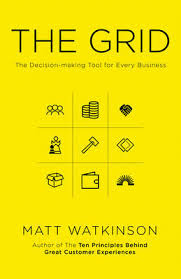The Editor: Reader Experience Champion

 Some books are immersive webs of storytelling. They create new worlds into which readers dive to escape this one, and the richer and longer the experience, the better.
Some books are immersive webs of storytelling. They create new worlds into which readers dive to escape this one, and the richer and longer the experience, the better.
Business books do not work like this.
‘I hear from business leaders and colleagues all the time, “Oh I’m just too busy. I don’t have time to read.” So what are you going to do? Are you going to try and push water uphill and get them to read a much bigger book? Or are you going to make it as accessible and reader centric as possible and allow them to follow their nose and go to the topics that they really care about, that are going to give them the most value?’
Author Matt Watkinson, my guest on The Extraordinary Business Book Club podcast this week, began his career as a web designer focused on user experience, and this is the approach he takes to writing a book.
‘If you want to be a good designer, you don’t bring an ego to the work, you listen to what people say and you try and design the most customer-centric thing that you can and I’ve tried my best to bring that mentality to writing. A book ultimately is a product.’
Most authors, of course, didn’t begin their careers this way, and this approach isn’t instinctive to them.
Which is why it’s so important that non-fiction editors DO think like UX designers. Editors champion the author within the publishing house, but for the author, they champion the reader.
Here are just a few of the design decisions Matt took with his new book The Grid: The Decision-Making Tool for Every Business (Including Yours), which make it work so well for the reader:
The model
There’s a great quote in the book from mathematician George Box: ‘Essentially, all models are wrong but some are useful.’ The Grid is basically a simple 9-box grid, a three-by-three matrix. Each element has three parts, making 27 touch-points in total. Matt describes it as ‘scaffolding’ for business thinking, but the power of the model goes beyond its utility. Because it fits on one page, because you see the whole thing at a glance, and how the elements relate to each other, the power of the thinking behind it is communicated so much more forcefully than if it were simply written chapter by chapter. If you can help your authors visualise their thinking and create models or structures that communicate those ideas visually, you will multiply their impact at a stroke.
Fast Track vs Deep Dive
The book has a two-part structure: it’s like a manual, with a ‘quick set-up’ for those who want just the essentials, ma’am, and the second more detailed instructions for those who want to dig deeper.
‘The whole structuring of the book, to have this fast-track section at the beginning, an executive summary that you could whip through really in no time… to have a structure that takes you progressively from a very high level and then down another level and then down a third level into those individual chapters… All of this was done to try and create as pleasurable and efficient reading experience as possible.’
Executive summaries
Each deep dive is consolidated into a few pages at the end of the book, so readers can dip into an area of interest and/or revise the section. This is how business communication works, but it’s not often how business books are structured.
Matt himself recognizes the value of the role.
‘One of the things I’ve noticed myself as I’ve matured as a writer and as I’ve read a lot more is that sometimes when I’m reading books I think, “Oh this could have been a five star book with a better editor.”’
Perhaps editors need new job titles – Reader-experience designers, or RX experts – to remind them and the world just what a difference they can make.
Alison Jones (@bookstothesky) is a publishing partner for businesses and organizations writing world-changing books. She also provides executive coaching, consultancy and training services to publishers. www.alisonjones.com.






Responses